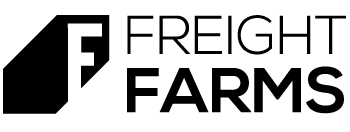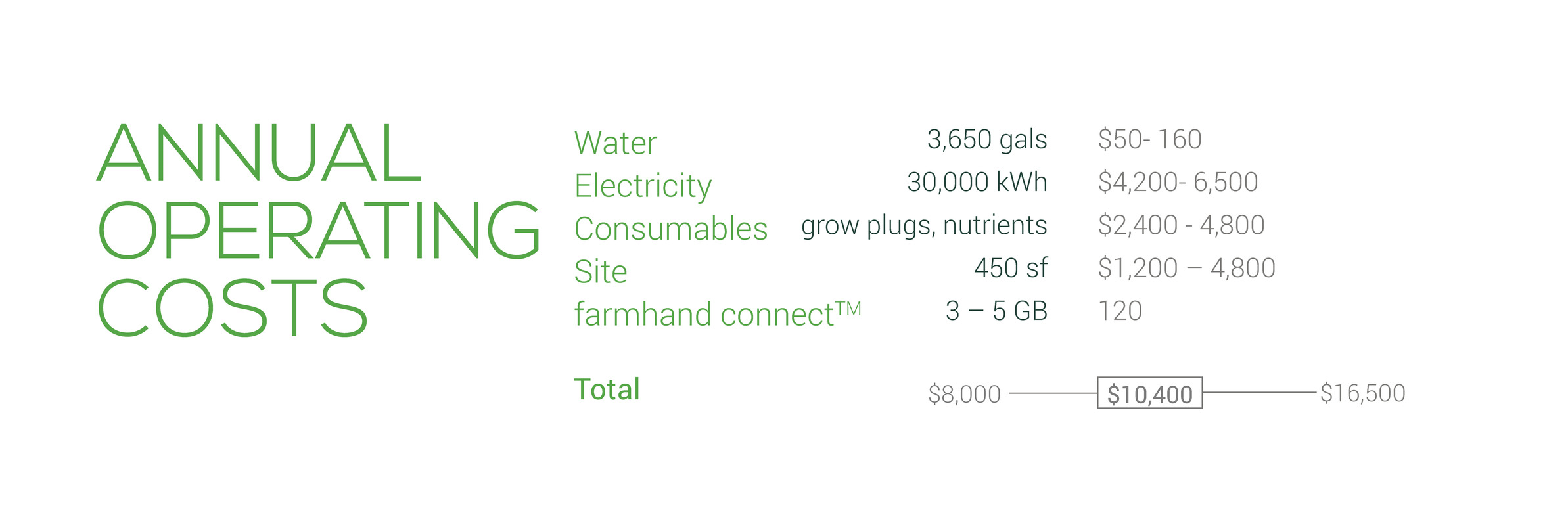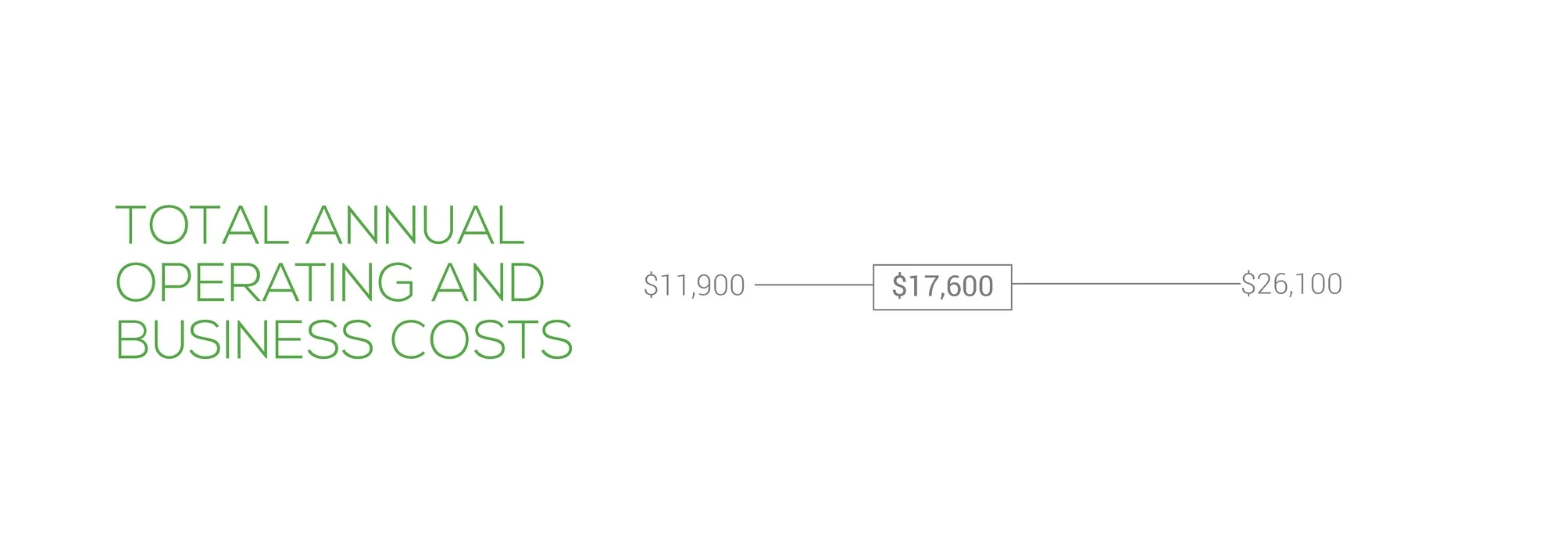Grower Data: Farming as a Business with the LGM
Welcome to our most popular blog post of all time!
We originally published this story back in 2015 so the content is a bit outdated. We have since launched our next generation container farm, the Greenery™, which we encourage you to learn more about! This new farm has more plant sites, stronger LED lighting, and more flexibility for growing your business.
Our customer base here at Freight Farms is incredibly diverse, but whether you’re an entrepreneur, a distributor or a restaurant, the business numbers need to make sense. We shared data on how the LGM compares to traditional farming practices, and now we are sharing the data we’ve been able to collect on crop yields, business and operating expenses, pricing and revenue.
The small business farmers in our network are each unique in how they operate their businesses. Some sell directly to customers, others to restaurants or wholesalers. The diversity in business plans influences the numbers significantly. Some of the other variables that have an impact are packaging, location, crop, and hired labor. While the numbers we are sharing have significant ranges, they still paint a good picture of how a business can be run using the Leafy Green Machine.
First, we’re sharing some of the top crops grown by our farmers and the corresponding weekly yields. We’ll then elaborate more on the costs associated with running the LGM, and how pricing and revenue can break out.
Crop Yields
By now you’re aware that the crops that grow best in the Leafy Green Machine are... leafy greens. To optimize all 320 square feet inside the container, we recommend growing smaller compact crops, like head and loose leaf lettuces, herbs and heartier greens like kale and swiss chard. That doesn’t mean larger crops can’t grow, but for those who are operating it as a business we recommend growing crops with a high turnover rate, which just means each farmer will have more produce to sell for profit.
Here we’re sharing the weekly yields of some of the more popular crops grown by our network of farmers. You’ll notice that we measure yields by a unit dependent on the crop (heads, bunches, ounces etc.), but we’ve also converted the yield numbers into a standard unit of measure (pounds), across the board. It’s important to keep in mind that this is not how the market buys and sells all varieties of produce, but we wanted to give a relative measure that you could wrap your head around.
Operating costs
Now that you’ve got a good sense of what the LGM can produce, let’s talk about its consumption. You’ll notice wide ranges, and that’s because a lot of these costs are location dependent. For example, electricity costs in New York City may be drastically different than those in Arkansas, and a site lease in Boston may cost more than one in New Hampshire.
We’ve seen operating costs ranging from around $8,000 to $16,500, but most frequently this falls around $10,400 annually. Obviously, some of these costs are subject to change.
Business Costs
In addition to operating an LGM, there are also indirect costs associated with running the LGM as a business. These costs are largely driven by our farmers and their chosen business model, so similar to the operating costs these are also going to range. We think of these numbers differently than operating costs, because these vary based on who is buying the produce. As a result we really rely on our experienced farmers’ network to uncover best practices for our newest farmers. Ultimately our farmers are their own boss, and each farmer’s income and goals are his/her own. But as a result of being so personal, these items are less straightforward. Even so, we wanted to include as many of the potential line items as possible. For the purpose of being clear about the numbers, we’ve included the bulk of the line items we uncovered and a range of our farmers’ annual spend:
Again, we’ve seen business costs ranging from around $3,900 to $9,600, but most frequently this falls around $7,200 annually.
Below we've combined all the costs associated with operating the LGM as a business that we discussed above:
Adding it all up
Alright, we just shared a lot of numbers that are important to know. These are crucial to understand for when farmers figure out how to price the end product. What we encourage our farmers to do is drill this number down into a cost per unit (unit depending on crop and described in the chart above). This number gives you a floor for pricing, meaning you’d never want to continuously sell your crop for less than what it took to produce. This is the most important thing to remember when operating the LGM as a business.
We totally understand that this can sound like a daunting task to those who aren’t familiar with how to calculate all-in costs, which is why Heather came up with a handy spreadsheet model that calculates each freight farmer's cost per unit. All you need to do is input some of your own data! So if you’re working on your business model, and need to figure out the cost per unit just ask us and we’ll send it right over.
Revenue and Pricing
Pricing can be tough for some farmers. The above information will keep your business profitable, but when optimizing revenue you need to take into consideration a few more variables. Here are the three things to keep in mind when pricing a product:
Cost to produce (above)
Competition and substitute prices (what else is in the market that buyers can purchase instead?)
Customer willingness to pay (at what price will a buyer say “ouch” but buy it anyway?)
For those farmers who are new to the market or for companies introducing a new product to their current buyer, they can choose to introduce their crop by offering it at a low introductory price. This limits the buyer's risk for purchasing this new product, enticing them to try it out. This also gives the farmer the ability to attract customers while not anchoring the price of their product too low, and furthermore, gives the buyer the ability to test the product. After a specified period of time, if the buyer is happy with the product, the price reverts back to the non-introductory (e.g., higher) price. In essence, you’re building your very own demand curves!
Pricing
Like we said earlier, each of our farmers operates unique businesses, choosing to grow and sell different crops to a variety of different outlets. This diversity in business plans influences the numbers significantly, but we do want to give an example of how some of our farmers are pricing their product. Here is a range of what our freight farmers in Boston have been commanding in wholesale price for cases of mini heads of Red Oak Leaf Lettuce:
The Bottom Line
Now that we’ve talked about yields, operating/business costs, and pricing, it’s time to put it all together to get an annual profit. Below we’re using the pricing example from our farmers in Boston selling mini-head lettuces wholesale:
88 cases x $12.50 = $1,100 weekly revenue
$1,100 x 52 weeks = ~$57,000 annual revenue
$57,000 - $18,000 = ~$39,000 annual profit
An average of 88 cases per week breaks out to $1,100 in revenue, or ~$57,000 annually. Factoring in the annual costs discussed above (~$18,000) calculates to a profit of ~$39,000 annually for one Leafy Green Machine.
So how do these numbers scale if farmers operate more than one farm? It’s tempting to multiply the bottom line for the number of farms, but here are two things to remember: fixed costs and some other variable costs scale. This gives a boost to profits over multiple farms.
But what is the biggest variable that drives the economics of the farm? Crop type. The buyer type (who the farmer sells to) comes in a very close second. We’ve talked at length about lettuce, but for this example we’re switching to a lower-price crop: basil. The low price of this crop can be overcome by packaging it in small units (picture 1 or 2 ounce clamshells of basil). When farmers choose to sell directly to end consumers (CSAs, farm stands etc.) they may command the highest price point for some normally low-price crops. Conversely, choosing to sell that same low-price crop in bulk to a wholesale produce distributor generally does not command a price above the “all-in” cost per unit - so don’t do that! Just keep in mind that the labor involved in packaging will increase costs.
Growing in the future
The most powerful thing to know here is that our network of farmers is relatively new to the occupation. These numbers weren’t gathered by expert growers, but simply from everyday people like you and me who had a burning desire to become a farmer. Another great thing about these numbers is that they aren’t static; they will change as we get more farmers growing, and they will change again as we make our systems more efficient.
It’s important to us to share the capabilities of the Leafy Green Machine, but even more important to tell the story of each of our farmers. And we owe it to them for all of this information. They are the ones growing for their local communities, and making the real positive change in the food system. We wouldn’t be where we are today without them!





